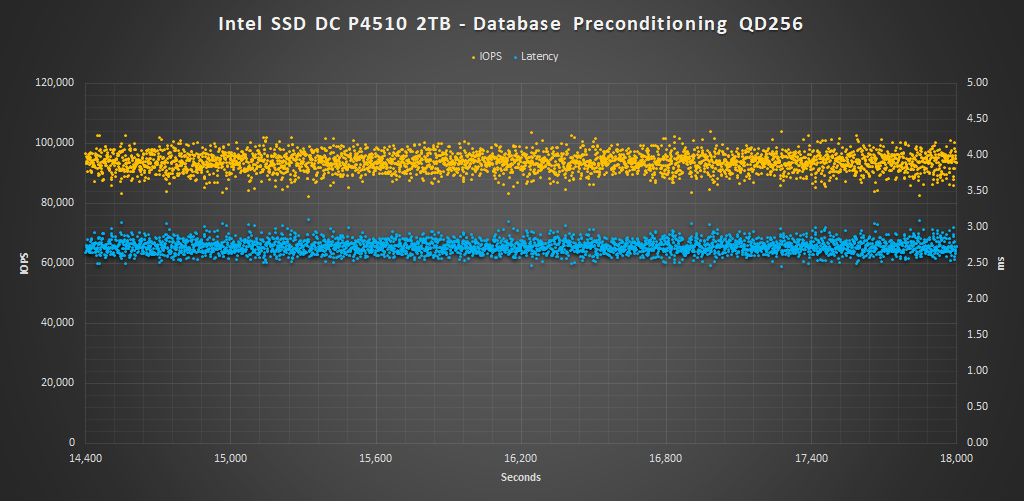SERVER PROFILES
While synthetic 100% read or 100% write workloads do a great job of testing the underlying technology and reporting easy to understand results, they aren’t always indicative of how the drive will be used by the end user. Workloads that simulate enterprise environments try to bridge that gap without being overly complex. The process of measuring our server workload performance is the same as measuring random. The drive is first secure erased to get it in a clean state. Next, the drive is filled by sequentially writing to the RAW NAND capacity twice. We then precondition the drive with respective server workload at QD256 until the drive is in a steady state. Finally, we cycle through QD1-256 for 5 minutes each measuring performance. All this is scripted to run with no breaks in between. The last hour of our preconditioning, the average IOPS, and average latency for each QD is graphed below.
The Database profile is 8K transfers, and 67% percent of operations are reads.
During our database run, the Intel DC P4510 shows very competitive performance for QDs 1-32, however, past that, the 2TB model seems to max out at around 93.5K IOPS. The 8TB, on the other hand, is able to keep up with some of the best and averages 145K IOPS at QD128 and QD256.
The Email Server profile is similar to the Database profile, only it 8K transfers at 50% reads and 50% writes.
The heavier percentage of writes during our email server profile proved to be more challenging for the 2TB model. It is the lowest ranked after QD32 and averages 70K IOPS. The 8TB model proves that it has what it takes to deliver more under the curve and beats out most other drives up to QD64, only the Micron 9100 MAX outshines it thanks to its higher than normal over provisioning.
 The SSD Review The Worlds Dedicated SSD Education and Review Resource |
The SSD Review The Worlds Dedicated SSD Education and Review Resource | 


Do you have access to, and are willing to review, the Intel SSD DC P4511 Series in 2TB and 4TB capacity?
I’m especially interested in their 4K Q1D1 random speeds.
No sorry. I don’t believe they have sampled that drive.
OK, thanks for letting me know.
Forgot to add the link to the Intel website : https://www.intel.com/content/www/us/en/products/compare-products.html/memory-storage?productIds=192995,137107,137112
are these drives good to use on a Mac?